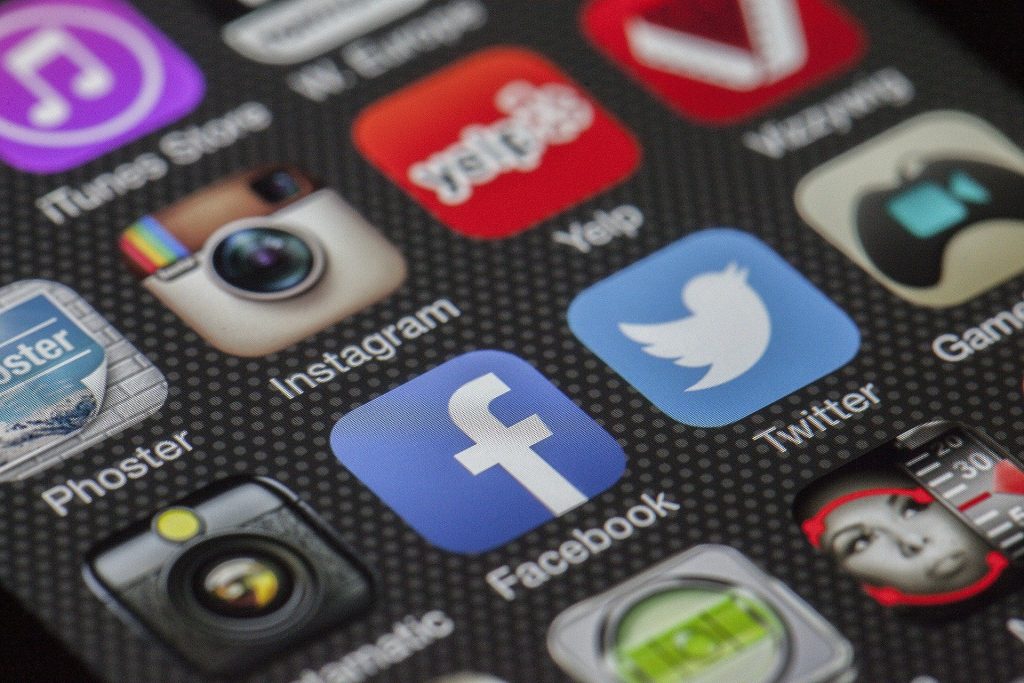18 Social Media
Reading time: 3 minutes
Overview
This chapter covers some social media venues for science communication.
Sections in this chapter

Get Social
Love it or hate it, the most popular venue for science communication is now social media.[1] There are many benefits to science communication using platforms like Twitter, Facebook, Youtube, or TikTok:
- Social media can blend personal experiences, worldwide news, and science topics together in a way that grounds science in reality and brings more diverse voices into the mix.
- The content on these platforms is short, visual (limited text), and engaging – everything that makes for effective story-telling to a general audience.
- It becomes easy to ask questions and discuss science with many people, including Nobel Prize winners, in a less intimidating and informal setting.
There are also some downsides to using social media for science communication, and you’re encouraged to read more in this Survival Guide by Science Magazine.[2] This chapter outlines just a handful of examples of effective science communication that use social media but is by no means a comprehensive or up-to-date list. Everyone has their own social media “bubble” and the content of this chapter reflects the author’s personal experience.
Twitter Threads
Twitter is a social media and news site that allows users to post images, links, and text under 240 characters called “tweets”. As a scientist, you might imagine that it is difficult to convey a complex scientific concept in 240 characters! Science communicators in #ScienceTwitter and #ChemTwitter will create threads of tweets that masterfully draw in the reader to explain a topic. These threads are formatted similarly to research proposals (see the chapter on Proposals): they begin with a hook, some interesting topic, and then dive into the details, before wrapping up with an overview.
Here’s a great example of science communication in a Twitter thread by Gwenaëlle (@getneuro) that has music and images:
I inject tiny amounts (0.5 microliters or 0.5x 10e-6) of an AAV into a mouse brain, measure where the AAV travels in the brain, then record how the AAV infected brain cells act during different behaviors or after the subject receives drugs. 3/5
— Gwenaëlle, PhD (@getneuro) August 27, 2020
And here’s an example of how to promote your newly published research article using a Twitter thread:
Very happy to announce that our new paper on oxytocin pathway gene networks in the human brain has just been published in @NatureComms https://t.co/15NNImcQjN
Here’s the story behind this study, how we did it, and what we found…
[THREAD] pic.twitter.com/sh7bTgg17l
— Dan Quintana (@dsquintana) February 8, 2019
There are also creative ways to use polling to create interactive Twitter threads, like Mika McKinnon’s (@mikamckinnon) #YouFindaRock:
You ignore the yellow not-candy calcite; you’ve played with that enough to not feel charmed by its characteristic bubbling in acid today.
You focus on the white puff of scolecite. Knowing what it is doesn’t abait your curiosity even a smidgen.
>
— Mika McKinnon (@mikamckinnon) July 30, 2020
Facebook is the default social network in most of North America, and also the main source of news. Links to popular or research articles can be posted on Facebook and discussed or reshared by anyone. Unfortunately, pseudoscience and fake science news are also perpetuated on the same platform, and it can be hard to know what to trust if you are not an expert. As Craig McClain discussed in this PLoS Biology article, scientists doing outreach on Facebook must become “Nerds of Trust” to fight this misinformation.[3]
Science TikTok

As of 2020, TikTok is a new and rapidly growing social platform. Originally designed for lip-syncing to songs, users post short videos with some audio playing in the background. Text usually appears in short speech bubbles that users point to, rather than being spoken out loud. It’s become a short and engaging way to post informational videos about science or relatable videos about being a scientist.[4] It’s become increasingly important in an age of remote and online learning.[5] Darrion Nguyen (@lab_shenanigans) is one of the most popular people in science TikTok.
y’all got me feeling insecure pic.twitter.com/rPtAar8XDr
— Darrion Nguyen (@lab_shenanigans) November 5, 2019
Science YouTube
For years now, YouTube has been a go-to platform for science videos. Many Science Channels are targeted toward kids, are replace classic science TV shows of the 90s and earlier. One of the most popular chemistry YouTube channels is “Periodic Videos“, where the Einstein-haired Professor Martyn Poliakoff explains all kinds of chemistry to a general audience. This show is targeted towards adults rather than children. Another great channel is by YouTuber Imari Walker, a microplastics researcher and environmental engineer. These channels follow all the science communication tips described in this module: storytelling, knowing your audience, and also flashy science demonstrations!
Periodic Videos: Melting a cheeseburger in hydrochloric acid
Imari Walker: 10 Facts about Microplastics
- Social media for scientists. Nat Cell Biol 20, 1329 (2018). ↵
- "A social media survival guide for scientists" by Neil A. Lewis, Jr., Jay J. Van Bavel , Leah H. Somerville, June Gruber. Nov. 5, 2018. doi:10.1126/science.caredit.aav9607 ↵
- McClain CR (2017) Practices and promises of Facebook for science outreach: Becoming a “Nerd of Trust”. PLoS Biol 15(6): e2002020. https://doi.org/10.1371/journal.pbio.2002020 ↵
- "Chemists are finding their place on TikTok", Sam Lemonick, February 21, 2020, C&EN Volume 98, Issue 8. ↵
- "TikToks are teaching Generation Z about science", Rebbecca Mulr, November 5 2019, Massive Science, Accessed 2020-08-27. ↵

